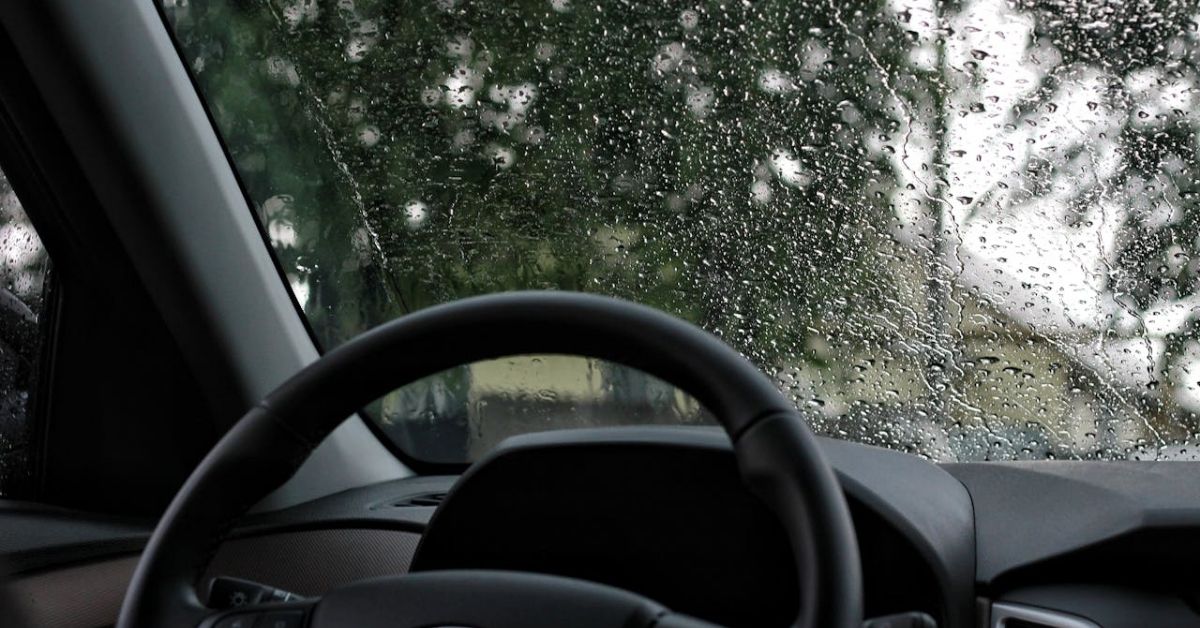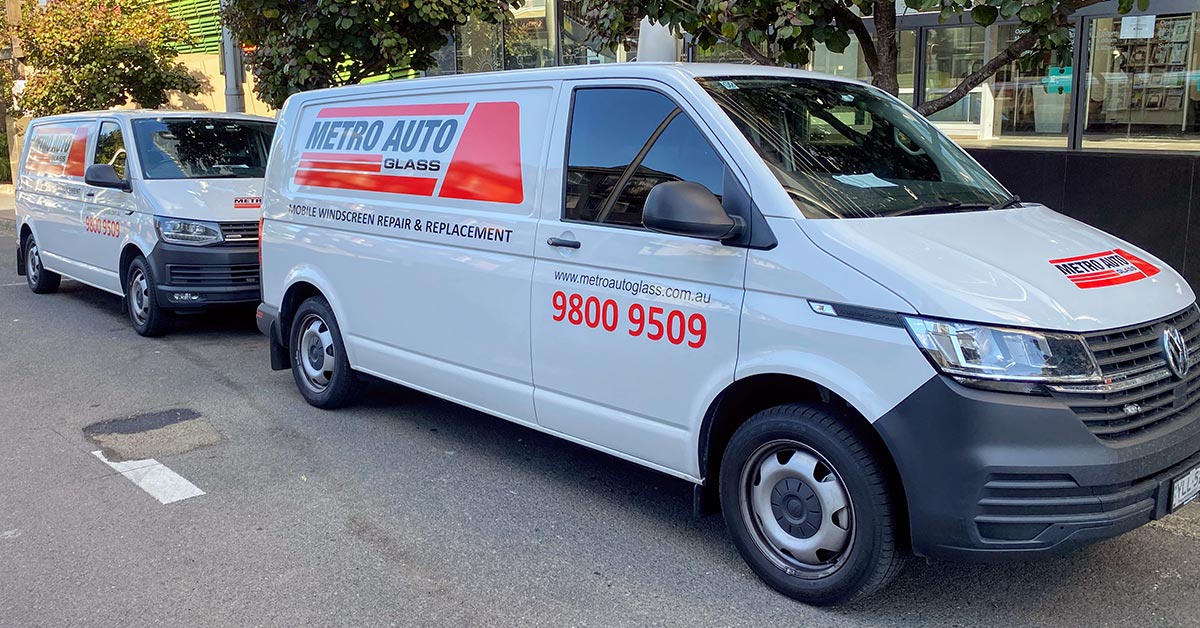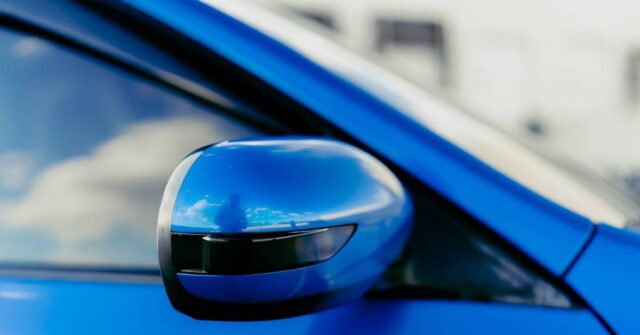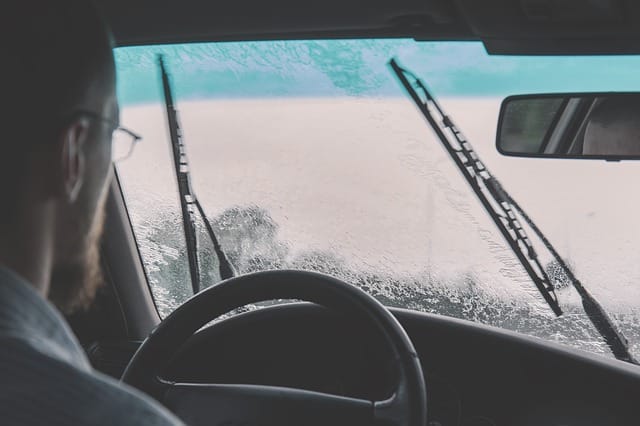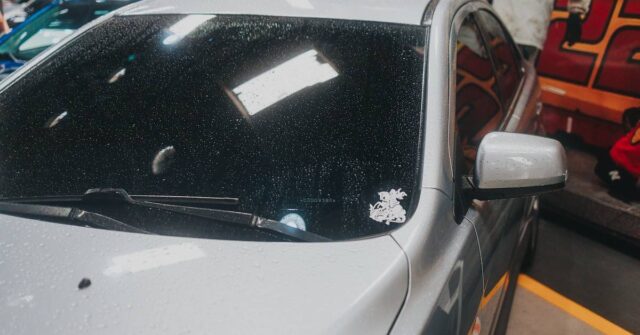Driving in the rain can feel like a scene out of a thriller – except the only mystery is whether your wipers will keep up with the downpour.
That’s where windscreen water repellents come into play. These handy treatments help water bead up and slide right off your glass, keeping your view crystal clear even in rough weather.
But with so many options on the shelves, figuring out the best one can be trickier than threading a needle in a moving car. This guide breaks it all down.
Why Use Water and Rain Repellent on Your Windscreen?
If you’ve ever driven through a heavy rainstorm and struggled to see past the droplets clinging to your windscreen, you’ll understand the value of a repellent.
It’s about more than convenience – it’s about safety and peace of mind.
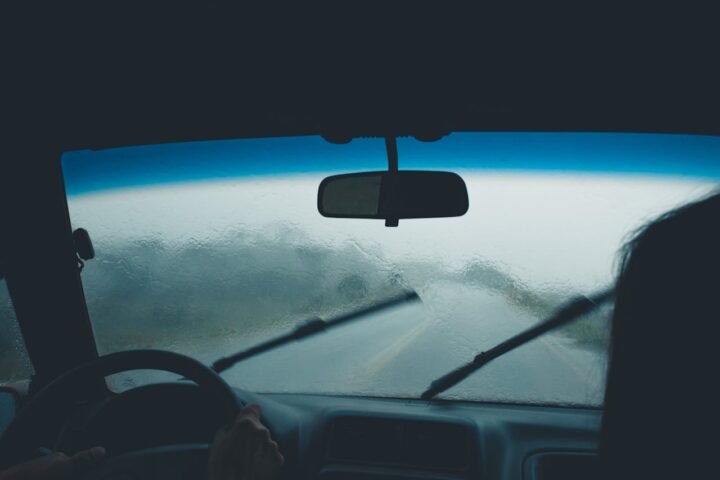

Improved Visibility During Wet Weather
Water repellents make rain scatter and bead rather than smear across your windscreen.
This leads to a clearer, less distorted view of the road ahead, particularly useful during high-speed driving or stormy conditions.
The faster you drive, the quicker those beads get pushed away – like magic, but it’s just physics.
Enhanced Driving Safety
Better visibility means quicker reaction times. If you can see hazards earlier, you have more time to respond.
That’s critical in wet conditions when braking distances increase. A water repellent might seem like a small touch, but it’s a serious upgrade for road safety.
Prolonged Wiper Blade Lifespan
When your windscreen stays cleaner and water slides off with less effort, your wipers don’t have to work as hard.
Less friction equals less wear, which means your blades can last longer and perform better between replacements.
Reduced Windshield Maintenance
With a repellent coating, dirt, bugs, and road grime don’t stick as stubbornly.
Washing your windscreen becomes quicker and easier – sometimes just a rinse is enough. That’s more time on the road and less time hunched over with a sponge.
How Do Windscreen Water Repellents Work?
They sound like high-tech wizardry, but the principle behind water repellents is simple science. These treatments change the surface tension of your glass, making it harder for water to stick.


Hydrophobic vs. Hydrophilic Coatings
Hydrophobic coatings repel water, causing it to bead up and roll away. That’s what most commercial windscreen repellents use.
Hydrophilic coatings, on the other hand, spread water into a thin sheet. Both have their uses, but for car windscreens, hydrophobic is the clear winner – literally and figuratively.
The Science Behind Beading and Sheeting
The coating creates a microscopic layer that reduces friction between water and glass.
Water molecules are more attracted to each other than to the treated surface, so they form beads and roll off when your car is in motion or when wipers are activated.
Temporary vs. Long-Term Treatments
Some products last a few weeks, others several months. It depends on the chemical composition and how the product bonds with your windscreen.
Professional treatments tend to last longer, sometimes up to a year or 20,000 km, depending on conditions.
Key Features to Look For in a Windscreen Water Repellent
Not all repellents are created equal. Some wipe on easily and vanish with no residue, while others are a bit fussier. Here’s what to check before committing.
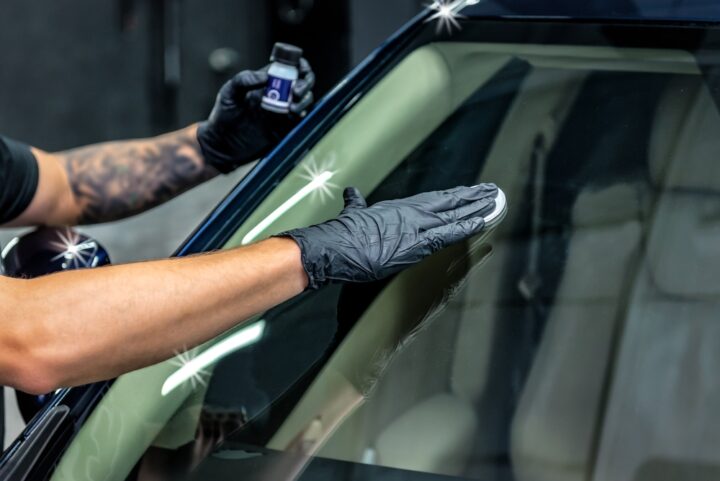

Durability and Longevity
If you’re going to apply a treatment, you want it to last. Look for products that hold up through multiple washes and weeks of rain.
Long-lasting formulas reduce the need for frequent reapplication, saving time and effort.
Ease of Application
Some repellents come as sprays, others as wipes. Most are straightforward – clean the glass, apply the product, wait, then buff.
But some require a more careful touch. Read the instructions and check reviews to avoid unexpected surprises.
Clarity and Streak-Free Finish
The last thing you want is a cloudy windscreen or annoying smears. Quality repellents dry clear and leave no residue behind. A streaky finish isn’t just ugly – it can be dangerous if it distorts your vision.
Compatibility With Windscreen Wipers
Some coatings can cause wipers to chatter or skip, especially if the formula isn’t fully cured.
Make sure the product plays well with your wipers – or consider switching to silicone blades for better performance on treated glass.
Resistance to Dust and Dirt
A good repellent won’t just fight water. Many also resist grime, mud, and oily film from traffic. That means a cleaner windscreen for longer, even if you’re driving behind a tradie’s ute on a dusty back road.
Top Rain and Water Repellent Products in Australia
The Aussie market has no shortage of contenders. Here are some of the top-rated options you’ll find locally – tested, reviewed, and road-proven.
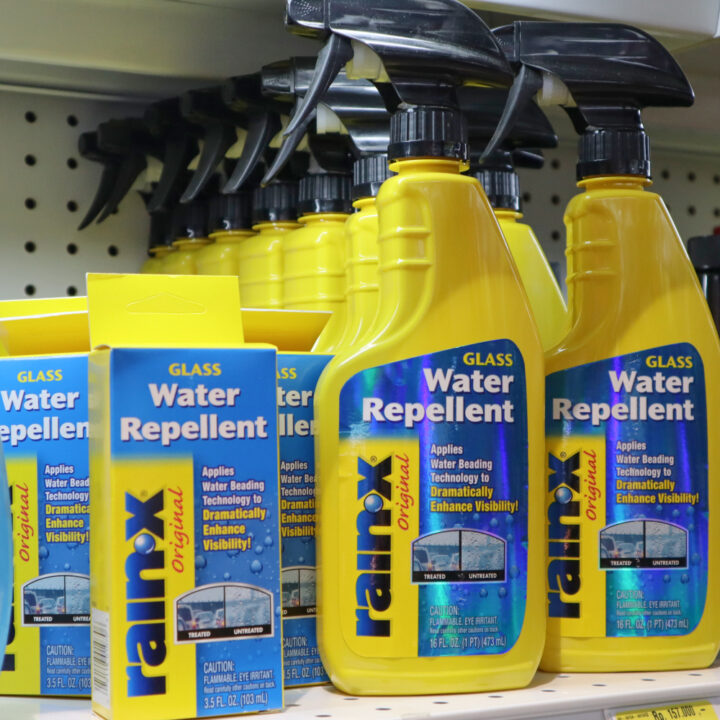

Rain-X Original Glass Treatment
A classic for a reason. Rain-X beads water like a charm and is widely available.
It’s simple to apply and affordable, though it typically lasts 2–4 weeks before reapplication is needed. Great for DIYers and weekend warriors alike.
Nanoman Windscreen Rain Repellent
Made in Australia, Nanoman Glass Coating boasts nano-technology that bonds tightly to the glass. It offers a longer-lasting barrier of many months or even years under ideal conditions.
A bit pricier than Rain-X, but many users say it’s worth the investment.
Nanovations Vision Protect
This line of products is more professional-grade. It offers UV protection and long-term hydrophobic effects.
While it may be harder to apply without some experience, the results last significantly longer, ideal for those wanting a set-and-forget option.
Invisible Glass Rain Repellent
A popular choice among detailers, this repellent also cleans while it treats. It’s fast-acting and leaves no residue.
While its durability isn’t the longest, it’s a good pick for quick maintenance in between major treatments.
How to Apply Windscreen Water Repellent Correctly
You don’t need to be a car detailer to get it right, but a little prep goes a long way. Here’s how to get the most out of your application.


Preparation and Cleaning
Always start with a squeaky clean windscreen. Wash with a non-abrasive glass cleaner, rinse thoroughly, and dry with a lint-free cloth. Avoid ammonia-based cleaners if your car has tinted glass.
Application Guide
Read and follow the manufacturer’s instructions for your chosen product to ensure you adhere to their specific instructions. Application processes and drying times can vary depending on each product.
Common Mistakes to Avoid
Don’t apply in direct sunlight – it can cause streaking. Don’t use too much product, thinking more equals better. And don’t skip the curing time, or the product may wash away before it bonds properly.
Finally, it is best to do the application in a controlled environment such as a garage with good lighting.
If you do it outside, there is a high risk of leaves or dirt getting blown onto the glass during the drying time, which will ruin the final outcome.
How Often to Reapply for Best Results
Most consumer-grade repellents last a few weeks to months.
Check your windscreen regularly – if the water stops beading, it’s time for another coat. Professional treatments typically last longer.
Professional vs. DIY Windscreen Treatment
Should you do it yourself or let the pros handle it? Both approaches have their perks, but one might suit your needs better than the other.
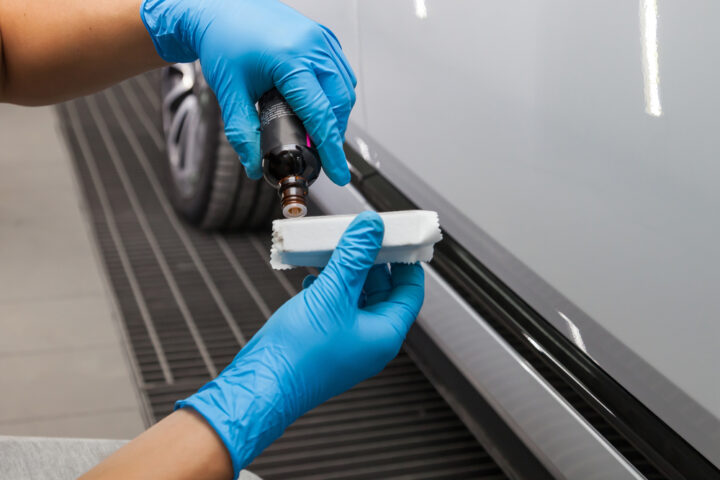

Benefits of Professional Application
Pros have access to longer-lasting products and specialised tools. Their application tends to be more uniform, reducing the chance of streaks or missed spots.
If you want longevity and a polished finish, a professional service is worth considering.
Cost Comparison and Value for Money
DIY kits range from $10 to $50, depending on brand and volume. Professional treatments typically cost more, but they may last five times longer.
If you’re factoring in time, convenience, and frequency, the value might surprise you.
When to Consider Professional Services
If you’re dealing with persistent rain, long commutes, or just hate reapplying every few weeks, a professional-grade treatment can be a time-saver.
It’s also a good choice before road trips or stormy seasons.
Maintenance Tips for Treated Windscreens
Once your glass is treated, a little maintenance helps the coating last. Here’s how to keep it in good nick.
Cleaning Without Stripping the Coating
Use pH-neutral glass cleaners and avoid harsh scrubbing. Microfiber cloths are best – no paper towels or abrasive pads.
Avoid waxes or products that leave residue, as they can interfere with the repellent’s effect.
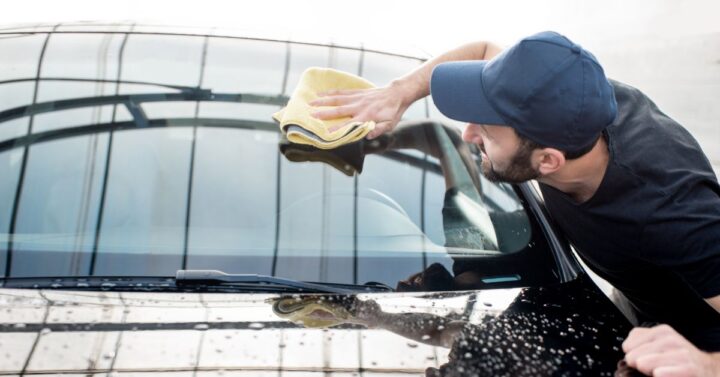

Monitoring Water Beading Performance
Watch how water behaves when it hits the glass. If it stops forming beads and starts to smear, the coating is breaking down. That’s your cue for a touch-up.
Extending the Life of the Treatment
Park in the shade when you can. Sunlight and UV exposure can degrade some coatings over time. Regular gentle cleaning also helps maintain performance without wearing the treatment away.
FAQs About Windscreen Rain Repellents
Still got questions? Let’s clear up some common ones.
Are These Products Safe for All Vehicles?
Yes, most repellents are safe for all standard windscreens. However, always check if your vehicle has special coatings, sensors, or tint that may react differently.
Do They Affect Tint or ADAS Sensors?
Most water repellents won’t harm window tint, especially if you avoid the edges.
For vehicles with Advanced Driver Assistance Systems (ADAS), check your owner’s manual or ask a technician – some sensors can be sensitive to coatings and may even require recalibration.
Can I Use Them on Rear and Side Windows?
Absolutely. Applying repellents to side and rear windows can improve visibility all around, especially when merging or reversing in wet weather.
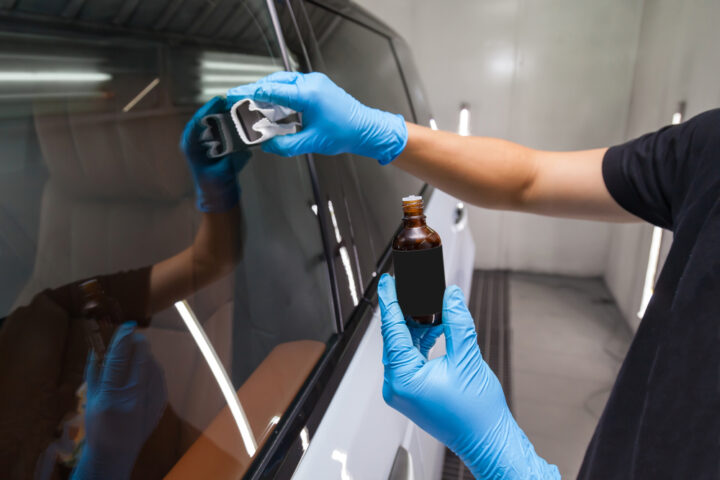

Conclusion: Choosing the Best Water Repellent for Your Needs
Choosing the right product boils down to your driving habits, local weather, and how much effort you want to put in.
Whether you’re after a quick DIY fix or a lasting professional-grade coat, there’s something out there for every driver.
Clear glass equals clear thinking – and better safety. And in the wild weather Aussie roads can throw at you, that’s something worth having.
